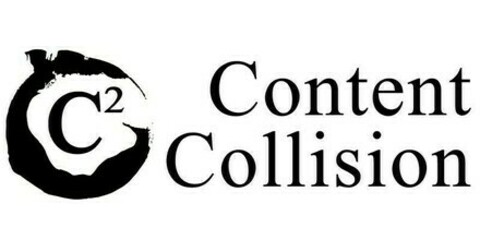Think PR is just for publicity? it’s the key to better SEO, too
Find out why PR might be the missing piece in your SEO strategy—and how to track its impact.

PR is traditionally known for boosting a brand’s reputation. When your company’s name is mentioned by top media outlets, it gains public recognition and credibility. But there’s another side to PR that’s often overlooked: its potential to enhance your SEO.
Some marketers see PR as a means to earn backlinks, and they’re not wrong. High-quality links from authoritative media can significantly help your SEO. However, securing these links through mainstream media often requires a paid sponsorship, which can be pricey.
But don’t be discouraged. Even with a basic press release distribution as part of your PR strategy, you can still see a big boost in your off-page SEO. Let’s break down how PR can directly benefit your search rankings with practical examples and trackable metrics you can implement right away.
1. Quality backlinks beyond direct media mentions
Direct backlinks from mainstream coverage are rare and often paid, but here’s the good part: once your story gets out there, niche bloggers and industry sites frequently pick it up.
They’re more likely to include a link to your site when referencing your news. So even if the main media source doesn’t link to you, this ripple effect from smaller sites can provide valuable backlinks.
Use tools like Ahrefs to monitor any new backlinks after a PR push. Look for increases in referral traffic from niche websites in Google Analytics—these secondary links can improve your site’s authority and help boost your rankings.
2. Increased brand visibility and mentions
Even if you don’t get a direct backlink, PR-driven brand mentions can still boost your SEO efforts. When your brand is highlighted in industry blogs or trade publications, it sparks interest and recognition.
This often leads to increased brand searches—people googling your company name after reading about it—which can be a positive signal to search engines.
Track this by monitoring branded search volume using Google Search Console. An uptick in these searches can correlate with higher organic rankings, as Google sees increased interest in your brand as a sign of credibility and relevance.

3. Enhanced website traffic
A well-executed PR campaign can lead to a significant increase in website traffic. For example, when you launch a new product or feature and issue a press release, the announcement can be picked up by industry sites, tech blogs, or niche publications. This surge in traffic is a positive signal to search engines, indicating that your site is engaging and offers valuable content, which can help boost your rankings.
To track this impact, use Google Analytics to monitor traffic metrics, especially focusing on referral traffic sources. Pay close attention to bounce rate and time on page for visitors arriving through PR-driven traffic.
High engagement rates from these users can contribute to better SEO performance, signaling search engines that your content resonates with the audience.
4. Boosting domain authority
When your brand gets featured in respected industry publications, it’s not just about immediate traffic—it’s about building long-term authority. A feature in Inc. magazine or an interview in Harvard Business Review provides high-quality backlinks that search engines love.
You can track improvements in your site’s Domain Authority (DA) using tools like Moz or Ahrefs. A rising DA score typically correlates with better search rankings across your target keywords. It’s a long-term play, but the boost in credibility is worth the effort.
5. Content syndication and SEO value
Press releases distributed via platforms like PR Newswire or Business Wire don’t just get picked up once—they’re often syndicated across dozens of news outlets. This increases the reach of your content and can result in multiple backlinks to your site, even if they are no-follow links.
While these links might not directly impact rankings, they help build brand awareness and can drive referral traffic. Track this by monitoring the number of referring domains and observing spikes in referral traffic in Google Analytics. Syndicated content can also show up in search results, increasing your visibility for targeted keywords.
6. Amplified social signals
A good PR campaign doesn’t just stop at traditional media—it also makes waves on social media. When your press release or news story gets shared widely on platforms like LinkedIn, Twitter, or Facebook, it can create a buzz that drives more visitors to your site.
You can gauge the impact of social shares by tracking social traffic in Google Analytics and using tools like BuzzSumo to measure the number of shares. While social signals aren’t a direct ranking factor, the increase in traffic and brand mentions can help improve your site’s engagement metrics, indirectly benefiting SEO.
7. Shaping your brand’s reputation
PR plays a crucial role in managing your brand’s online reputation. If a negative review or bad press surfaces, a strategic PR response can help control the narrative. Sharing positive news stories and success case studies can drown out the noise and improve your brand’s image.
You can track the effect of PR on your reputation by monitoring changes in brand sentiment using tools like Brandwatch or Mention. Positive changes in sentiment often correlate with increased user trust and higher click-through rates (CTR) in search results.
8. Boosting local SEO
If your business has a local focus, PR can be a powerful tool for improving your local SEO. A well-crafted local PR campaign, like coverage for a store opening, often includes details like your business’s address, phone number, and website link, which are vital for local citations.
Track the impact on your local SEO using Google My Business insights. Look for increases in local search impressions and map views, which can indicate better visibility in local search results.
9. Turning mentions into backlinks
When your PR campaign gains traction, it often leads to brand mentions on blogs, industry sites, or niche forums beyond your target PR channels. While these mentions don’t always include a direct link, they still hold potential.
This is where your PR team can step in. By reaching out to these sites and requesting a link, you can transform unlinked mentions into valuable backlinks.
It’s a simple yet effective tactic that takes advantage of the buzz your PR efforts have already created, boosting your site’s authority and enhancing off-page SEO.
To track this strategy’s success, use tools like Ahrefs to identify unlinked mentions and monitor the growth in referring domains. Additionally, watch your referral traffic in Google Analytics to measure the impact of these new backlinks.
10. Tracking press release impact with search data
Optimizing press releases with relevant keywords is a good start, but the real value lies in understanding how users find your site after a release goes live. By using Google Search Console, you can track the search queries that lead visitors to your website following the release. This data helps you spot trends in user interest and refine your future PR and SEO strategies.
Instead of focusing solely on ranking, pay attention to new search queries and the impressions they generate. If you see an increase in clicks or new keywords appearing in Search Console, it’s a clear sign that your PR efforts are effectively driving organic traffic and boosting your visibility in search results.
PR isn’t just a tool for media exposure—it’s a powerful ally in your SEO strategy. By integrating PR efforts with your SEO goals, you can track the impact through metrics like domain authority, organic traffic growth, and social signals. Regular communication between your PR and SEO teams is key to maximizing these benefits. This way, both teams can monitor traffic increases, referral links, and new keyword appearances resulting from PR activities.
If you’re looking to strengthen your PR game, start with a solid press release strategy. Check out our guide to the best press release distribution services here.

Content Collision provides performance-based digital PR services and B2B content marketing services for tech startups in APAC and beyond. Book a discovery call to learn more.




